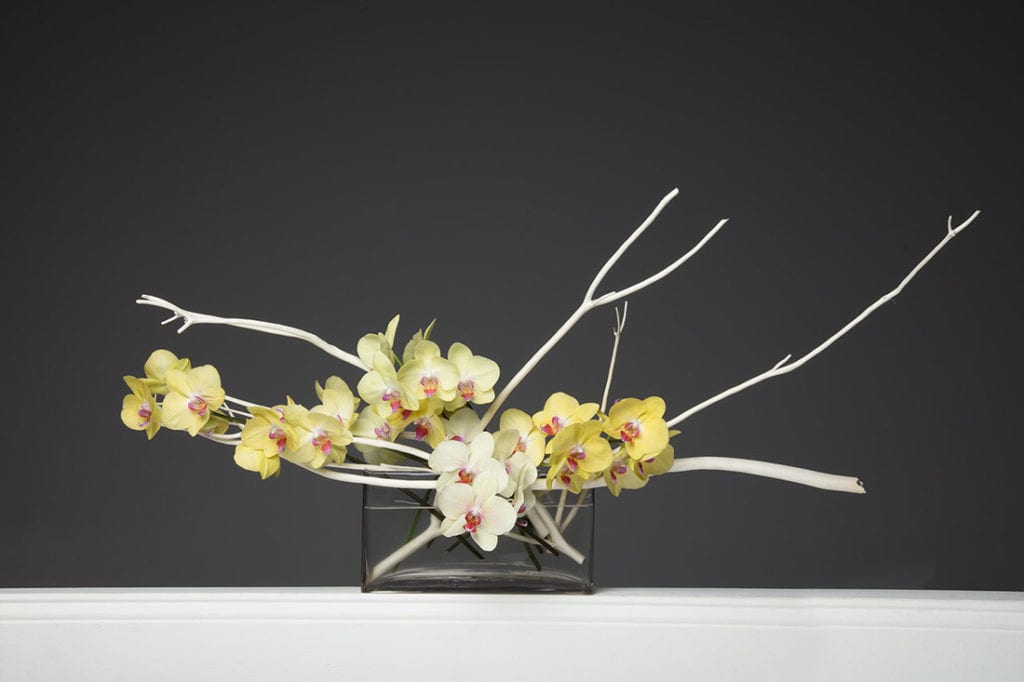Longtime Buckhead resident Terry Furuta has more than four decades of experience in the floral design business.
She has been practicing ikebana, the Japanese art of flower arranging, for more than 25 years. Ikebana, which originated in Japan more than 600 years ago, is more than just decorative. It’s seen as a spiritual process, or meditation, that helps develop a closeness with nature. Furuta is a certified professor of the Ikenobō School of Ikebana, having taken classes from masters in both Atlanta and New York, and her award-winning work includes designing arrangements for the United Nations, Mitsubishi and New York’s Waldorf Astoria. This summer, she will open a shop at Corso Atlanta, a luxury senior living development in Buckhead, and plans to offer classes she hopes will make this ancient practice accessible to people of all ages. Here, she shares insight into ikebana and her role as its ambassador in Atlanta.

What are the main principles of an ikebana arrangement?
In the Ikenobō School, there are three main components of an arrangement represented by different stems of flowers: heaven, man and earth. The space between the flowers is equally or more important than the actual flowers in an arrangement because the flowers represent the flowers growing in nature.
Can any kind of flowers be used?
You can use any kind of materials in the more modern freestyle arrangements, but in traditional ikebana, you only use seasonal flowers or what is available outside right now.
What are some personal benefits of practicing ikebana?
When I first started to learn, we only used seasonal materials, and my teacher made us go out and pick our materials. We couldn’t go to the store or wholesaler. It has given me an awareness of what’s growing around me and an appreciation of nature. With the meditation part of it, because of each stem having a meaning of where it’s placed in the arrangement, you can’t think about anything else.
How is ikebana different from a traditional Western-style flower arrangement?
In a Western arrangement, we want the flowers to look straight at you. In an ikebana arrangement, the flowers are talking to each other. They aren’t going to face the front; they are going to face each other. It makes it more interesting and natural. You can feel the life in the arrangement even though the flowers have been cut. You get the feeling they are communing with each other and with you.
For more information about ikebana and Furuta’s classes, visit terryfurutadesigns.com.
Giannina S. Bedford is multi-faceted writer and editor. Her work covers design, travel, food and business. She’s penned Simply Buckhead’s home feature since inception and held a variety of editorial roles at the magazine. Her freelance work has appeared in Condé Nast Traveler, USA Today, Virtuoso Life, Hemispheres and TravelandLeisure.com. She also contributes regularly Atlanta Business Chronicle. Fluent in Spanish, Giannina was born in Miami and grew up in Brazil, Chile, Hawaii and Australia. She currently lives in Dunwoody with her two kids and husband.

















